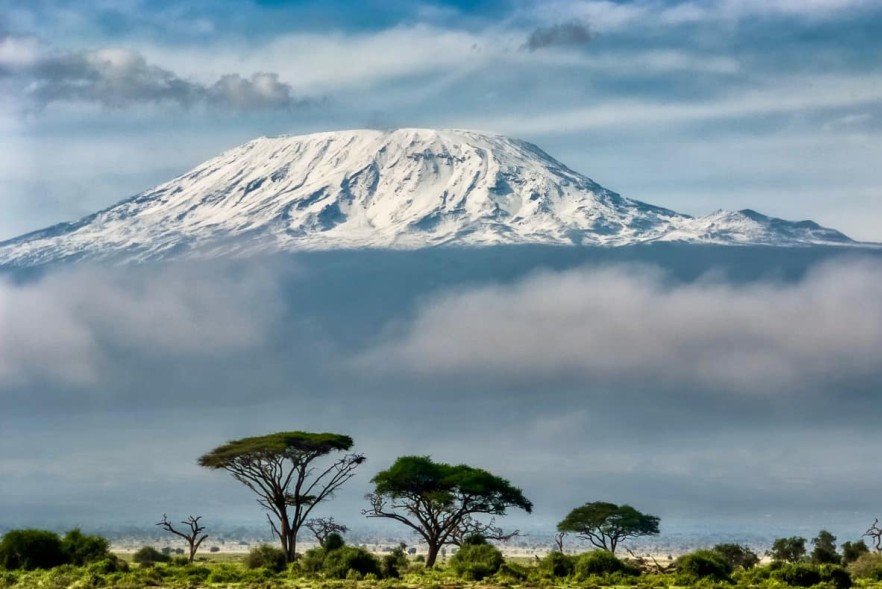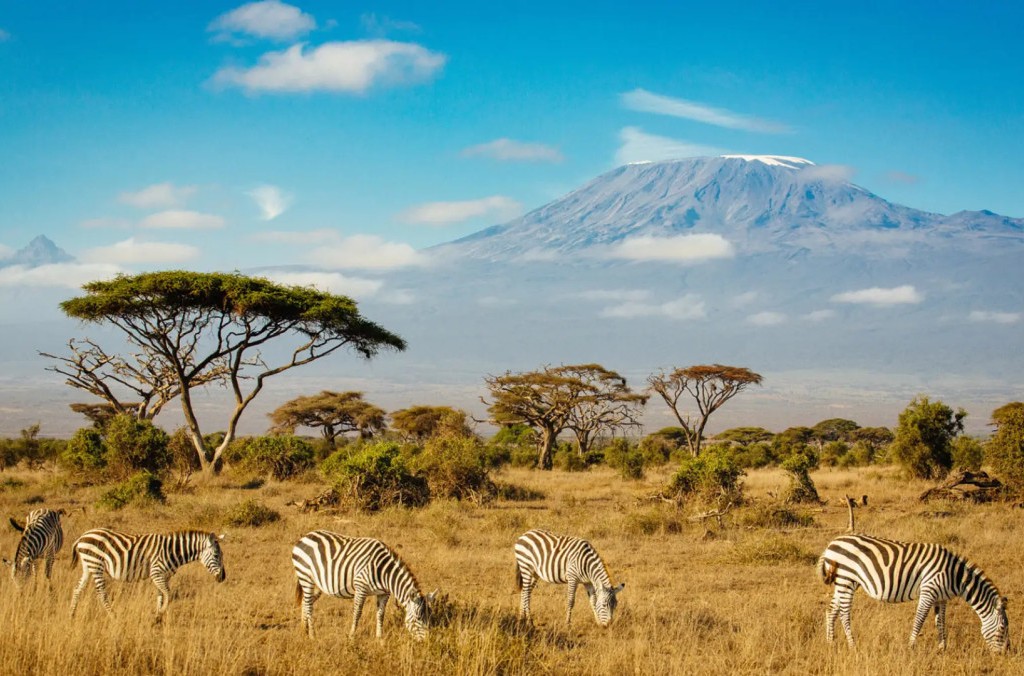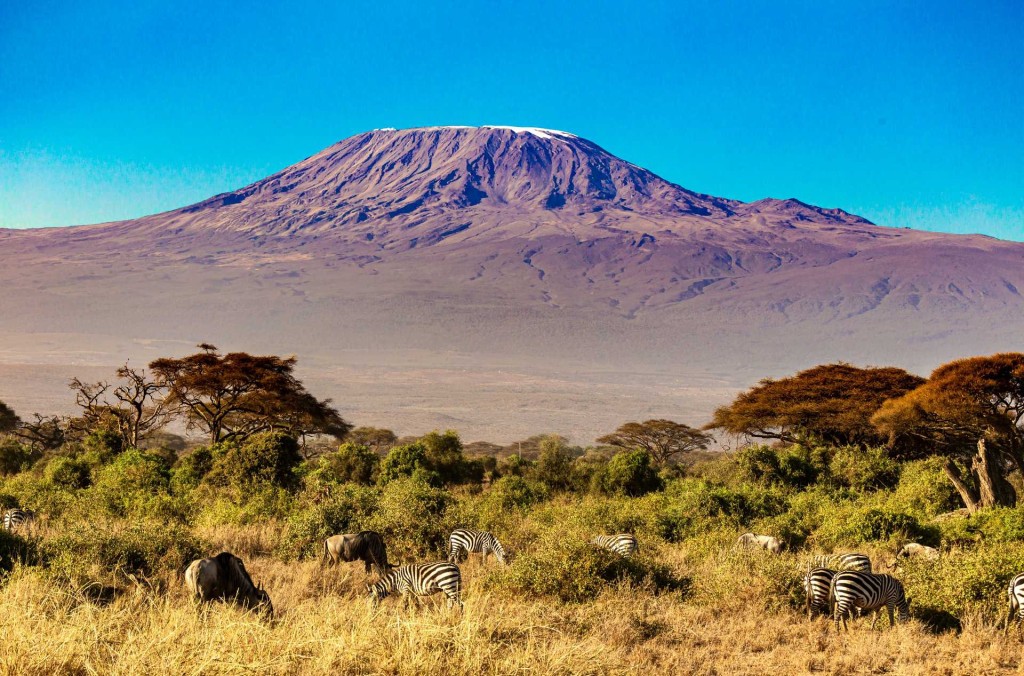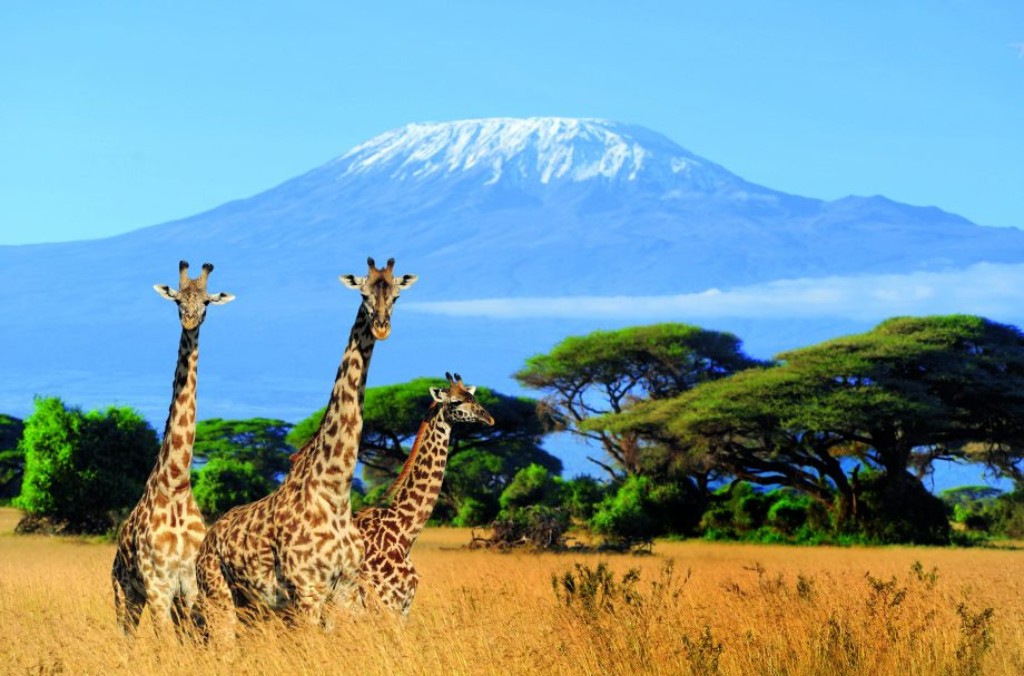KILIMANJARO NATIONAL PARK
- Country: Tanzania
- Location: Northern Tanzania
- Language Spoken: Swahili
- Area (Km): 1,688 Km Squares
- Visa Requirement: yes
Kilimanjaro National Park in Tanzania is home to Africa's highest peak, Mount Kilimanjaro, a dormant volcano and one of the "Seven Summits". Climbing to the summit is the main attraction, but the park also offers diverse ecosystems, varied flora and fauna, and shorter hiking options. The park was declared a UNESCO World Heritage Site in 1987.
Key features
- Mount Kilimanjaro: The park's main feature is the mountain itself, which has three distinct volcanic cones: Kibo (the highest), Mawenzi, and Shira. The snow-capped Kibo peak, Uhuru Peak, is the ultimate goal for most climbers.
- Unique ecosystems: Climbers ascend through five distinct climate zones, starting with lush rainforests at the base, followed by heath and moorland, alpine deserts, and finally the arctic summit zone.
- Diverse wildlife: While not a safari destination, the park's forests and lower slopes support a range of wildlife, including elephants, buffalo, leopards, and various primates. The higher altitudes are home to a variety of endemic and migratory bird species.
- Day trips: For those who don't want to attempt the summit, guided nature walks and day trips are available. These can include hikes through the lower forests or visits to the Shira Plateau.
Climbing Mount Kilimanjaro
- Summiting: Climbing Kilimanjaro is a challenging multi-day trek that requires a certified guide and porters. There are several routes to the top, each with varying difficulty levels, lengths, and scenery. The most crucial factor for a successful climb is proper acclimatization to prevent altitude sickness.
- Popular routes:
- Marangu Route: Also known as the "Coca-Cola Route," this is the oldest and one of the most popular routes. It offers hut accommodation rather than camping and is considered the "easiest," though this does not mean it is an easy climb.
- Machame Route: Often called the "Whiskey Route," this is a more challenging but scenic route. It's a popular choice for adventurers and has a high success rate due to its design for better acclimatization.
- Lemosho Route: A longer and more remote route, the Lemosho offers beautiful scenery and excellent acclimatization, resulting in a high summit success rate.
- Rongai Route: The only route that approaches Kilimanjaro from the north, near the Kenyan border. It is drier and offers a different perspective on the mountain.
- Training: A moderate fitness level is necessary. Recommended training includes regular running, swimming, cycling, and hiking to prepare for the physical demands of the climb.
Best time to visit
- Dry Seasons (January to early March & June to October): These are the most recommended periods to climb, as they offer clearer skies, better visibility, and more favorable weather conditions. The trails are typically less muddy during these months.
- Rainy Seasons (April, May, November): Climbing is still possible, but conditions are more challenging due to heavy rains and muddy, slippery trails. Visibility is also reduced.
Location and access
The park is located in northeastern Tanzania, near the town of Moshi. It is accessible via Kilimanjaro International Airport (JRO), and many tour operators include transfers from nearby cities like Arusha.







